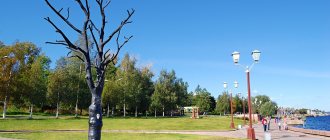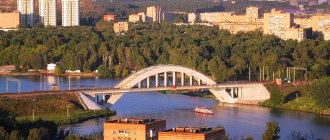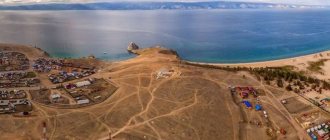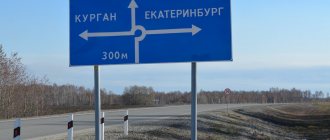Year founded: 1778
Square named after the 200th anniversary of Kovrov
Kovrov
- Russian city in the Vladimir region, administrative regional center. Located 64 km from Vladimir, on the right bank of the Klyazma River (a tributary of the Oka).
The settlement on the site of the future Kovrov was formed back in the 12th century, it was called the village of Elifanovka, and it was founded by Prince Yuri Dolgoruky. Later the village was renamed the village of Rozhdestvenskoye, by analogy with the Nativity Church built in the village. And in the 16th century, the village of Rozhdestvenskoye was given into the possession of the Kovrov princes, from the Starodubsky family, after which the village began to be called Kovrovo. Kovrov received city status by decree of Catherine II only in 1778
.
In 1916, construction of the Kovrov Machine Gun Plant began in the city; during the Great Patriotic War, it became the main enterprise for the production of automatic weapons for the front.
An old fire station (Photo: wikipedia.org) It was here in 1941 that V.A. Degtyarev created the famous anti-tank rifle. During the entire war, the plant produced more than one million two hundred machine guns, Shpagin submachine guns, anti-tank rifles, and the first Soviet aircraft guns. At the same time, an equipped one was sent to the front. After the war, the plant began producing motorcycles and missiles.
Since 2011, Kovrov has held the honorary title of “City of Military Glory.”
Such famous gunsmiths as V.A. worked in Kovrov. Degtyarev (now there is a House-Museum named after him), G.S. Shpagin, V.G. Fedorov and M.T. Kalashnikov. Among the interesting places in the vicinity of Kovrov is the Klyazminsky town. Previously, it was called Starodub-on-Klyazma and was founded by Yuri Dolgoruky in 1152. During the Time of Troubles, the city was completely destroyed by the Poles. Now only the ramparts and the Church of the Intercession, built in 1803, remain on the site of the town.
At the entrance of the Degtyarev Plant (Photo: wikipedia.org)
In one of the city’s libraries, the Family Reading Library, there has been a hare museum since 1999. It presents more than 700 species of “eared” animals.
But, of course, the most famous landmark of Kovrov is the Transfiguration Cathedral, whose bell tower stands at the top of the descent to the river. The cathedral was built at the end of the 19th century; subsequently it suffered great destruction. Now the cathedral is almost completely restored.
Day of the city
in Kovrov it is celebrated in August or September.
Where is the city of Kovrov?
Kovrov is the administrative center of the Kovrovsky district of the Vladimir region.
It is a city of regional subordination, within the boundaries of which the Kovrov urban district is formed. It is located on the left and right banks of the Klyazma River, which is a tributary of the Oka River. The approximate population is 137 thousand people, the territory area is 57 square kilometers. The climate in Kovrov is temperate continental with cold winters and warm but short summers. The annual precipitation rate is 569 mm.
Kovrov is located in the same time zone as Moscow, the offset relative to Coordinated Universal Time (UTC) is +3.
Coat of arms
The coat of arms of Kovrov is presented in the form of a French shield. In a green field there are 2 silver hares, sitting on their hind legs and facing away from each other. In the upper left corner is the coat of arms of the Vladimir region.
The shield is crowned with a tower crown with five teeth, behind which two swords are placed crosswise. It is surrounded by a white and blue ribbon of the Red Banner of Labor. She points to the award being given in 1978.
The artistic composition is included in the State Heraldic Register of the Russian Federation under No. 7566. Adopted by decision of the Council of People's Deputies of the city No. 24 of January 25, 2012.
What is the city of Kovrov known for?
- In the old part of Kovrov there is the Transfiguration Cathedral, which stands on the top of a hill going down to the river. The cathedral was built at the end of the 19th century with the money of parishioners. Since 1934 it has been used as a prison. In 1991, a large-scale reconstruction took place.
- There is a hare museum on Griboyedov Street. More than 1,000 exhibits made of glass, metal, porcelain and other materials are collected here. The museum was founded in 1999.
- On the territory of the city there is a Square named after A.S. Pushkin. Previously, the square was a cemetery. The son of Prince V.A. Kovr is buried here. Today, there is a monument to A.S. Pushkin in the park, and the graves have been put in order thanks to the local administration.
- In 1954, a monument to V. A. Degtyarev was opened in the city. The monument is dedicated to the scientist-designer who was involved in the creation of Soviet weapons. The monument is installed on a pedestal; Degtyarev holds a weapon blank and a caliper in his hands. The authors of the monument are M. G. Manizer, A. P. Velikanov.
- On Griboyedov Street there is a monument to military builders. The monument is made in the form of an obelisk and is dedicated to the work of people who helped the development of the city. The monument was erected in 2016.
- Among the architectural monuments of Kovrov, it is necessary to highlight the Fire Tower, built in 1904. The history of the local fire brigade of 40 people begins in this building. Residents of the city call the tower a “fire castle.”
Briefly about Kovrov. Review article
History of the city of Kovrov
To contents
Stele “200 years of the city of Kovrov”
A new page in Kovrov history began with the reign of Empress Catherine II, by whose decree on September 1, 1778, the Kovrov district was established as part of the Vladimir and Kostroma governorships, and the village of Kovrovo received the status of a district town . In 1796 the city was left to the state, but in 1803 it was restored again. In 1817, there were 177 houses and 887 inhabitants in Kovrov, and there were 2 churches.
In the spring of 1858, work began on the construction of the Moscow-Nizhny Novgorod railway, which was supposed to pass half a mile from the city. The first regular train from Nizhny Novgorod to Moscow suffered an accident at the Kovrov I station. Almost two years after that, all sorts of deficiencies were eliminated. On April 17, 1867, at the Kovrov station, two spans of the railway bridge across the Klyazma and the water pumping building collapsed into the river. By 1871, a new bridge was built. In August 1864, the Kovrov railway workshops were opened. In 1880, Kovrov became the starting point of the Murom Railway (Kovrov - Murom line).
In 1895 there were 770 houses and 42 wooden grain barns in Kovrov. Thanks to the railway, Kovrov's trade developed greatly. Factories and plants: 1 lard melting plant, 1 steam flour mill and 1 mechanical weaving factory and, in addition, an iron foundry and mechanical workshops of the Moscow-Nizhny Novgorod road (4 steam engines with 116 horsepower and 734 workers). Of the factories, the most significant was the paper-weaving factory of Ivan Treumov, producing up to 110 thousand pounds of calico. It employed about 1,700 people, and its turnover reached 2,300 thousand rubles. The city had 33 drinking establishments, a city school and 2 parish schools.
First excavator
In 1929, the Kovrov railway workshops were reorganized into a mechanical repair plant that carried out orders for the repair of imported excavators. When the question arose about the possibility of producing domestic earth-moving machines, it was decided to establish an excavator plant on the basis of the previous workshops. On April 21, 1931, the first Kovrovets excavator left the factory gates, and mass production began in 1933. For great successes, the Kovrov Excavator Plant in 1966 was awarded the highest Soviet award - the Order of Lenin .
The building where the city council and shopping arcades were located before the revolution. In August 1916, construction began on the Kovrov Machine Gun Plant (from December 1927 - Tool Plant No. 2, from July 1932 - Tool Plant No. 2 named after K. O. Kirkizh, from January 1949 - Plant named after V. A. Degtyarev). In 1918, the Main Artillery Directorate sent famous weapons designers V.G. Fedorov and V.A. Degtyarev to Kovrov.
During the Great Patriotic War, 7,885 Kovrov residents voluntarily enrolled in the people’s militia. 2 rifle regiments, 3 fighter battalions, a separate anti-aircraft artillery division and a partisan detachment were formed in the city. The 1st reserve cavalry brigade was located in Kovrov, commanded by Major General P. L. Rudchuk.
The plant named after K. O. Kirkizh became the main enterprise for the production of automatic weapons for the front. In 1941, at the Kovrov plant, V. A. Degtyarev created the famous anti-tank rifle. During the war, the plant produced and sent to the active army 1,202,481 units of various weapons - light and tank machine guns, Shpagin submachine guns, anti-tank rifles, ShVAK aircraft guns. On December 18, 1941, an equipped aircraft was sent to the front. During the war years, the excavator plant produced 10 thousand sets of wheels for the T-34 tank, 25 thousand casings for rockets, 40 thousand casings for aerial bombs, 2.5 million casings for mines.
Significant years for the city of Kovrov:
- In 1863 , the Moscow-Nizhny Novgorod Railway passed through Kovrov;
- A weaving factory was opened in 1883
- Since 1946 , large-scale production of motorcycles has been mastered at Tool Plant No. 2;
- In 1950s , the Degtyarev plant began producing missile weapons
- In 1949 , the Kovrov sewing factory was founded (now OJSC Sudar);
- In 1968 , the Kovrovstroy trust was created;
- In 1970 , a new reinforced concrete bridge across the Klyazma was put into operation;
- In 1975 , trolleybus service was opened;
- On November 3, 2011 , the city of Kovrov was awarded the title of City of Military Glory
Kovrov, Vladimir region
Location and travel
Geographic coordinates: Latitude 56°21′49″N (56.363628), Longitude 41°18′40″E (41.31122). Travel from Moscow: By train - 3 hours, High-speed electric train "Lastochka" - 2 hours. 22 min. BlaBlaCar - 4 hours, by bus from the bus station on Shchelkovskaya - 5 hours. Travel from St. Petersburg: By train - 14 hours, BlaBlaCar - 13 hours 10 minutes. Distance from Moscow - 271 km, from St. Petersburg - 976 km.
Anthem of the Kovrov region
Kovrovsky district - my life
At early dawn I will get up, washing myself with kindness. Again the worries of the day are coming, sent by fate. A villager will open the window of my soul again; it fell to me to serve the region, and here is my abode.
Chorus:
Live, region, bloom and sing, calm your heart with love, may your whole path be bright, and this is the essence of life.
(2 times)
Here strong people live and are famous for their deeds, Harvesters drive through the fields and extract stone. Malygin craftsmen give bricks to Russia, And the Mayak glassblowers work beautifully.
Chorus.
The Kovrovsky district is my life, I love your open spaces, Here is the Starodub land and Smolino patterns. In Vsegodichi the holy temple is the same age as hoary centuries. I bow to my native land and glorify it in song.
Chorus:
Live, region, bloom and sing, calm your heart with love, may your whole path be bright, and this is the essence of life. Give hope to people, revive holy temples, Let the bells ring from all sides.
Words and music by L. Kurnina.
Recommendations
Notes
- ^ a b
Resolution #433 - ^ a b c d
Law No. 130-OZ - [1]
- ^ a b
Federal State Statistics Service of Russia (2011).
“All-Russian Population Census 2010. Volume 1" [All-Russian Population Census 2010, vol. 1]. All-Russian Population Census 2010 [All-Russian Population Census 2010]
(in Russian). Federal State Statistics Service. - "26. The size of the permanent population of the Russian Federation by municipalities as of January 1, 2022.” Federal State Statistics Service. Retrieved January 23, 2022.
- ^ a b
State Committee of the Russian Federation on Statistics.
Committee of the Russian Federation for Standardization, Metrology and Certification. No. OK 019-95 January 1, 1997 “All-Russian classifier of objects of administrative-territorial division. Code 17 235”, Ed. changes No. 278 / 2015 dated January 1, 2016. (State Committee of the Russian Federation on Statistics. Committee of the Russian Federation on Standardization, Metrology and Certification. No. OK 019-95 January 1, 1997 Russian Classification of Administrative Objects (OKATO). Code 17 235
As amended by Amendment No. 278/2015 dated January 1, 2016). - ^ a b c
Law No. 143-OZ - Law No. 52-OZ
- "On the calculation of time." Official Internet portal of legal information
(in Russian). June 3, 2011. Retrieved January 19, 2022. - Post office. Information and computing center of OASU RPO. ( Post office
).
Search for postal facilities ( Search for postal facilities
) (in Russian) - Chisholm, Hugh, ed. (1911). "Kovrov". Encyclopedia Britannica
.
15
(11th ed.). Cambridge University Press. item 922. - Federal State Statistics Service of Russia (May 21, 2004). “The population of Russia, the constituent entities of the Russian Federation as part of federal districts, urban settlements, urban settlements, settlements, settlements is 3 thousand or more people” [Population of Russia, its federal districts, constituent entities of the Federation, districts, urban settlements, rural settlements - administrative centers and rural settlements with a population of more than 3000 people] (XLS). All-Russian Population Census of 2002 [All-Russian Population Census of 2002]
(in Russian). - “All-Union Population Census of 1989. The actual population of the union and autonomous republics, autonomous regions and districts, territories, regions, urban settlements and villages.” Came into force on the date of official publication (December 13, 2001). Published: “Vladimirskie Vedomosti”, No. 232, December 13, 2001 (Legislative Assembly of the Vladimir Region. Law No. 130-OZ of December 10, 2001 On the administrative-territorial structure of the Vladimir Region and the procedure for changing it
As amended by the Law of March 18, 2014 No. 22-OZ.
On the repeal of part 1 of article 15 of the Law of the Vladimir region “On the administrative-territorial structure of the Vladimir region and the procedure for changing it” and paragraph 3 of article 1 of the Law of the Vladimir region “On amendments to the Law of the Vladimir region” “On administrative territorial structure of the Vladimir region and the procedure for changing it
." Valid from the date of official publication (December 13, 2001). - Administration of the Vladimir region. Resolution No. 433 of June 13, 2007 “On the register of administrative-territorial entities and units of the Vladimir region,” as amended. Resolution No. 169 of March 5, 2015 “On amendments to the Resolution of the Regional Governor dated June 13, 2007 No. 433 “On the register of administrative-territorial entities and units of the Vladimir Region””. Came into force on the date of official publication. Published: “Vladimirskie Vedomosti”, No. 114, June 20, 2007 (Administration of the Vladimir Region. Resolution No. 433 of June 13, 2007. On the register of administrative-territorial entities and units of the Vladimir Region.
As amended by Resolution No. 169 of March 5, 2015.
On amendments to the decree of the Governor of the region dated June 13, 2007 No. 433 “On the register of administrative-territorial entities and units of the Vladimir region.”
Valid from the date of official publication.). - Legislative Assembly of the Vladimir Region. Law No. 143-OZ of September 9, 2004 “On granting the status of an urban district to the municipal formation of the city of Kovrov in the Vladimir Region and establishing its borders,” as amended. Law No. 110-OZ of August 10, 2009 “On Amendments to the Law of the Vladimir Region” On granting the status of an urban district to the municipality of the city of Kovrov in the Vladimir Region and establishing its borders “”. Came into force on the date of official publication (September 29, 2004). Published: “Vladimirskie Vedomosti”, No. 271, September 29, 2004 (Legislative Assembly of the Vladimir Region. Law No. 143-OZ of September 9, 2004 On assigning the status of an urban district to the municipal formation of the city of Kovrov, Vladimir Region and on establishing its borders
As amended Law of August 10, 2009 No. 110-OZ.
On amendments to the Law of the Vladimir Region “On assigning the status of an urban district to the municipal formation of the city of Kovrov, Vladimir Region and on establishing its border"
. Valid from the date of official publication (September 29, 2004) . - Legislative Assembly of the Vladimir Region. Law No. 52-OZ of May 11, 2005 “On granting the Kovrovsky district and newly formed municipalities included in its official status as municipalities and establishing their boundaries,” as amended. Law No. 88-OZ of August 5, 2009 “On amendments to the Law of the Vladimir Region” On granting the Kovrovsky district and newly formed entities received into its composition the status of municipalities and establishing their boundaries “”. Came into force on the date of official publication (May 17, 2005). Published: “Vladimirskie Vedomosti”, No. 156–157, May 17, 2005 (Legislative Assembly of the Vladimir Region. Law No. 52-OZ of May 13, 2005. On giving the Kovrovsky district and newly formed municipalities the corresponding status of municipalities and on establishing their boundaries
As amended by Law No. 88-OZ of August 5, 2009.
On amendments to the Law of the Vladimir Region “On giving the Kovrovsky district and its newly created municipalities the corresponding status of municipalities and on establishing their boundaries
.” Valid with day of official publication (May 17, 2005).
Economy
Kovrov is a major center of the Russian defense industry, specializing in mechanical engineering, metalworking, textile and light industry, as well as construction. Kovrov is home to the Degtyarevsky Plant, Kovrovsky Mechanical Plant, and Kovrovsky Electromechanical Plant.
Transport
Located on the Moscow-Nizhny Novgorod railway line - one of the oldest railways in Russia and one of the alternative routes of the Trans-Siberian Railway - Kovrov is also connected to Murom (served by the Moscow-Kazan railway line) via Murom Station.







